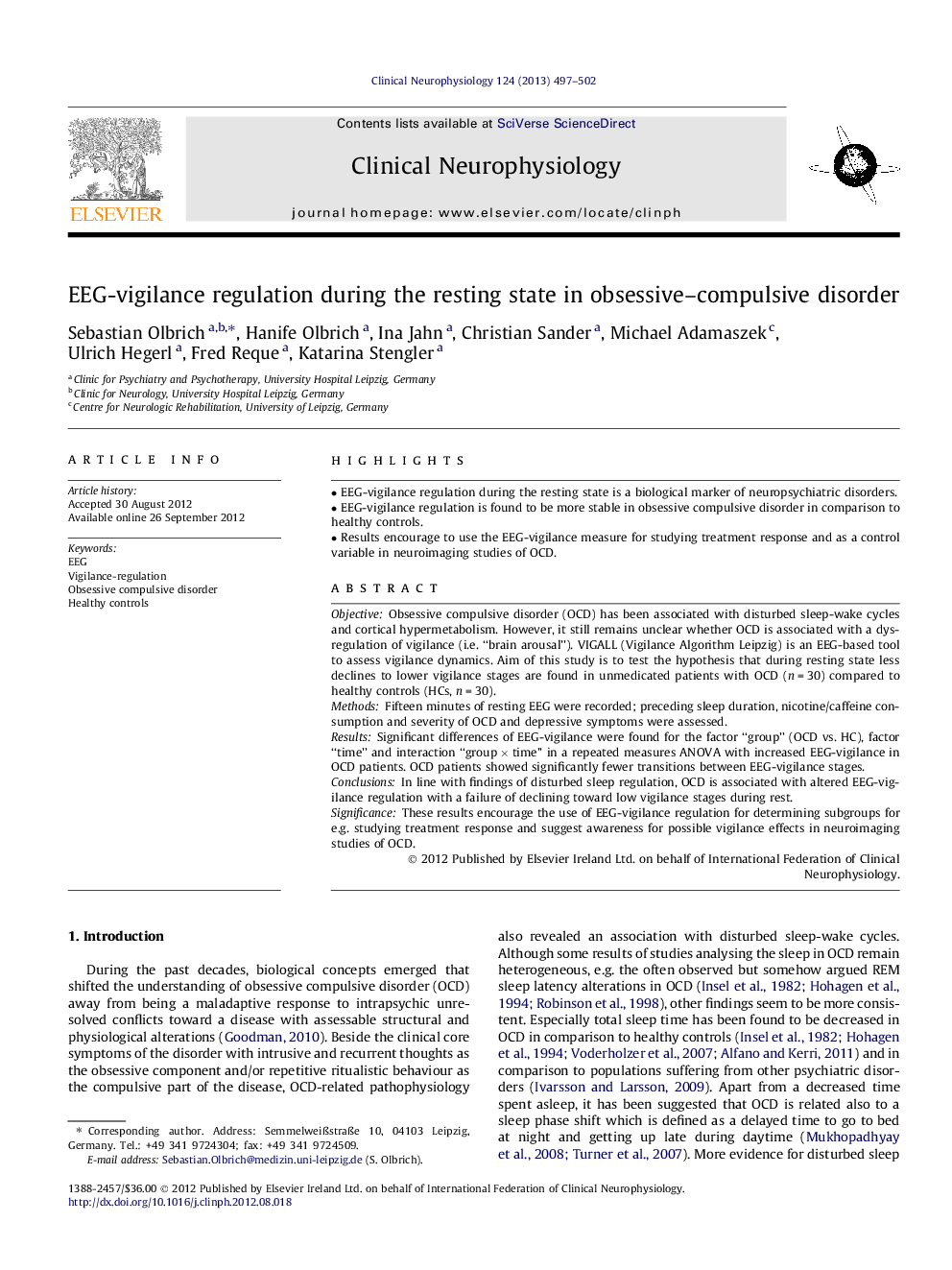| Article ID | Journal | Published Year | Pages | File Type |
|---|---|---|---|---|
| 3044361 | Clinical Neurophysiology | 2013 | 6 Pages |
ObjectiveObsessive compulsive disorder (OCD) has been associated with disturbed sleep-wake cycles and cortical hypermetabolism. However, it still remains unclear whether OCD is associated with a dysregulation of vigilance (i.e. “brain arousal”). VIGALL (Vigilance Algorithm Leipzig) is an EEG-based tool to assess vigilance dynamics. Aim of this study is to test the hypothesis that during resting state less declines to lower vigilance stages are found in unmedicated patients with OCD (n = 30) compared to healthy controls (HCs, n = 30).MethodsFifteen minutes of resting EEG were recorded; preceding sleep duration, nicotine/caffeine consumption and severity of OCD and depressive symptoms were assessed.ResultsSignificant differences of EEG-vigilance were found for the factor “group” (OCD vs. HC), factor “time” and interaction “group × time” in a repeated measures ANOVA with increased EEG-vigilance in OCD patients. OCD patients showed significantly fewer transitions between EEG-vigilance stages.ConclusionsIn line with findings of disturbed sleep regulation, OCD is associated with altered EEG-vigilance regulation with a failure of declining toward low vigilance stages during rest.SignificanceThese results encourage the use of EEG-vigilance regulation for determining subgroups for e.g. studying treatment response and suggest awareness for possible vigilance effects in neuroimaging studies of OCD.
► EEG-vigilance regulation during the resting state is a biological marker of neuropsychiatric disorders. ► EEG-vigilance regulation is found to be more stable in obsessive compulsive disorder in comparison to healthy controls. ► Results encourage to use the EEG-vigilance measure for studying treatment response and as a control variable in neuroimaging studies of OCD.
